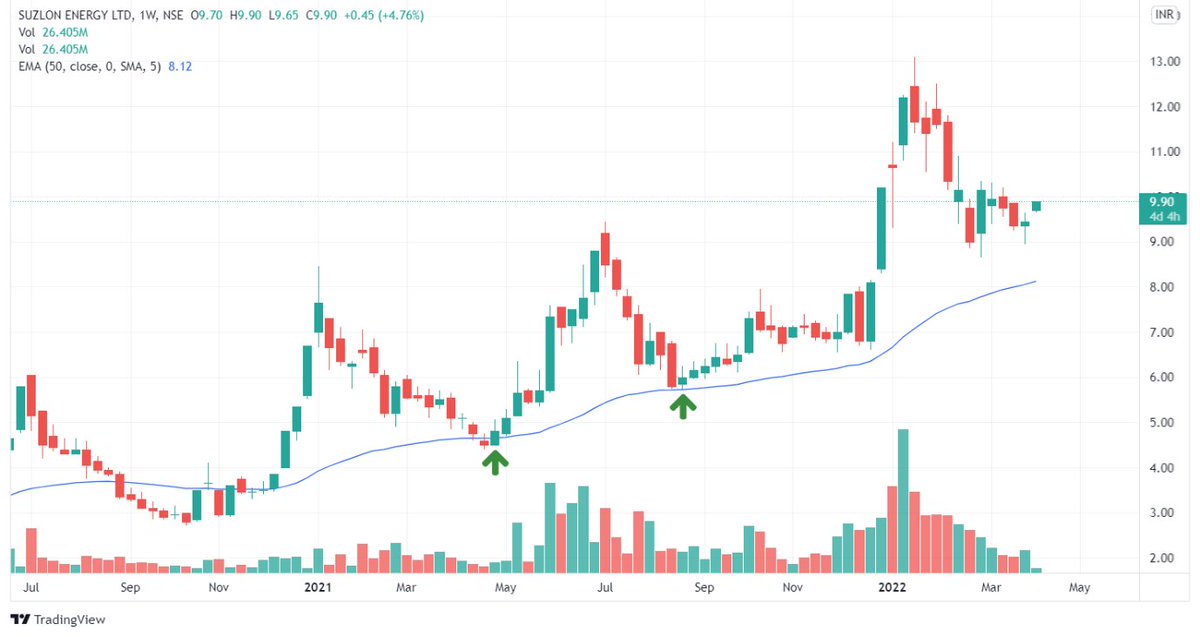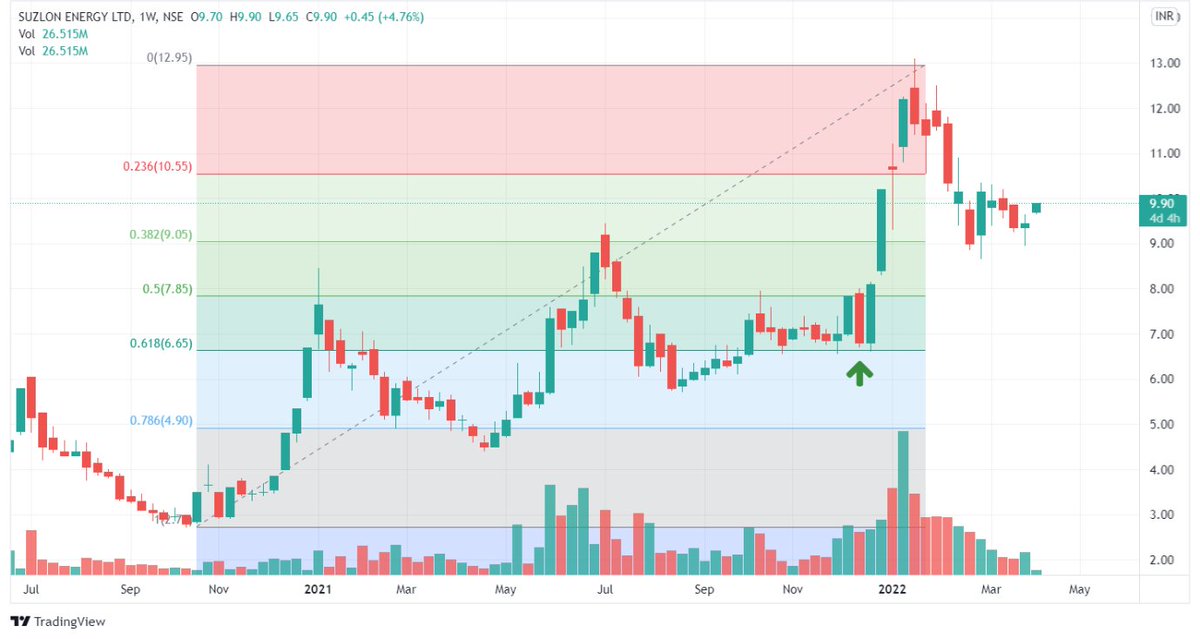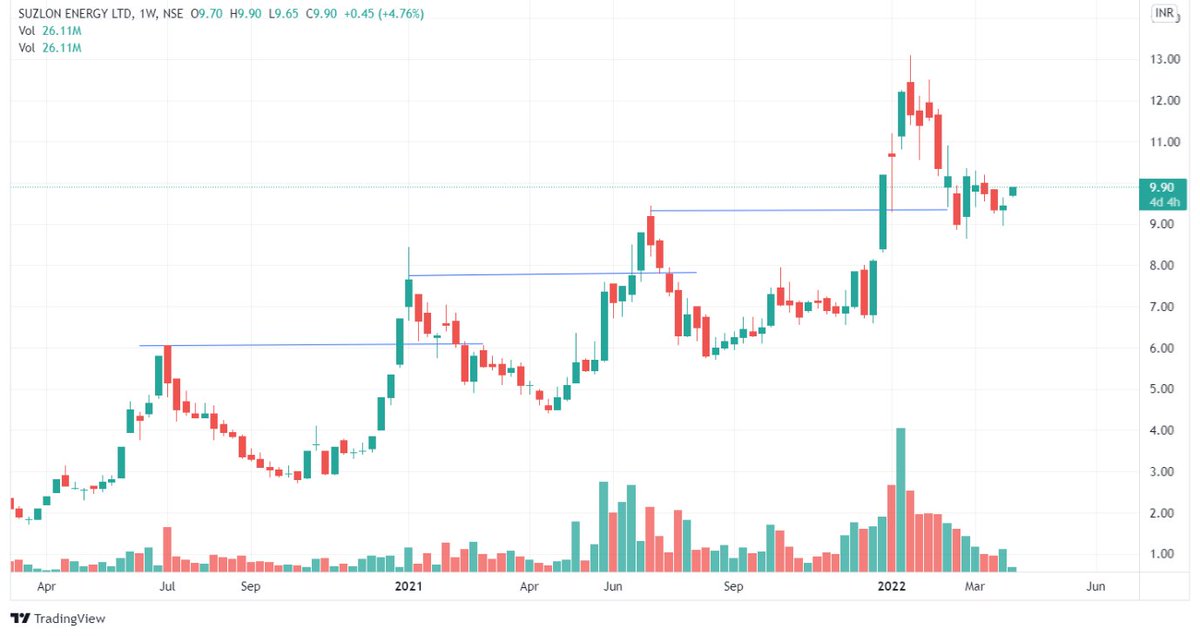
1. Trendlines: The Simplest of them all. After determining the trend's direction(quickly done using Swing High and Lows)👇 

A sequence of higher highs, followed by a series of higher lows, constitute an #uptrend. Similarly, a line of lower lows and lower highs include a #downtrend👇
However, one drawback of this strategy is that it takes quite a long time for #trends to be validated. It generally takes three contact points to validate a #trend👇
Hence, trends work well as an addition to other #pullback methods but not as a standalone method👇
2. Moving Averages: A tool that every newbie in the #StockMarket relies upon. The best part about #MovingAverages is that they can be used in a variety of ways, even for trading pullbacks👇 

Based on the style of trading, a 20, 50, or even 100-Day Moving Average might be used👇
3. Fibonacci: Fibonacci is one of the most effective pullback trading tools.
The trick is to wait for an emerging trend the drawing the A-B Fibonacci Tool from the trend origin to the trend wave finish point. Pullbacks may then be made using the retracement's C-Point👇
The trick is to wait for an emerging trend the drawing the A-B Fibonacci Tool from the trend origin to the trend wave finish point. Pullbacks may then be made using the retracement's C-Point👇

Fibonacci can be combined with Moving Averages for accurate trades👇
4. Breakouts: In Markets, prices are frequently characterized by Price Waves. They never move straight. Moreover, #Bullish and #Bearish trend waves trend alternatively👇 

The dominating waves travel in a particular direction, followed by correction waves in the opposite direction. Pullback traders tend to look for the #correction to enter trades👇
The underlying assumption is that you wait for the Price to "Pull Back" during the trend for a reasonable entry price👇
5. Horizontal Steps: Horizontal steps are an inherent ebb and flow of the Market. It's the intrinsic rhythm of Price.
The strategy here is to complement the breakout retreat outlined previously. Close to the market turning points, you can find the pullbacks👇
The strategy here is to complement the breakout retreat outlined previously. Close to the market turning points, you can find the pullbacks👇

However, if you miss the initial entry, you can take the help of horizontal lines to locate alternate entry points as the trade proceeds👇
6. Combining Trendlines & Fibonacci: We can combine both to create a strategy. The following are the steps👇
Identify a Bullish Trend👇
Switch the selected time frame after spotting the pattern👇
Determine the #Swing Low and Swing High from the recent Swing. Between the two swings, place your Fibonacci Retracement indicator👇
It would help if you bought within the Fibonacci Retracement mark on the charts, which is generally between the 50% and 61.8% retracement👇
The latest Swing low, which was utilized to create the Fibonacci retracement levels, can be effective for placing the Stop Loss👇
Some webinars on Pullbacks: Trading Pullbacks with ADX and RSI By @MaverickAmit01: sedg.in/78zdkve3
Price action and Pullback Trading by @sanstocktrader : sedg.in/gulakmv6
• • •
Missing some Tweet in this thread? You can try to
force a refresh














